Our little boy was happy and healthy until we found out his ‘normal’ birthmarks were a sign of a devastating disease described as a ‘ticking time bomb’
When Jennifer Pearsall took her youngest son Grayson to hospital after an allergic reaction to eggs, doctors were much more concerned about the 'birthmarks' on his back.
The one-year-old's spots appeared after he was born and, like most parents, assumed they were completely normal.
However, that was far from the case; those little brown spots were actually a sign of an incurable genetic condition that his mother described as a “ticking time bomb.”
Jennifer, 40, from Brisbane, remembers the moment she opened a letter in late January 2018 explaining Grayson had neurofibromatosis type 1 (NF1). They had undergone a lengthy testing process and an MRI a few weeks earlier.
The condition causes flat, dark spots on the skin and the growth of benign tumors just under the skin. These tumors can grow in the nerves near the spinal cord and brain, and can become cancerous at any time.

Jennifer took Grayson to hospital after an egg reaction, but doctors were concerned about the spots on his back (pictured). Jennifer thought they were 'birthmarks', but instead they were café au lait spots – a key indicator of the disease

Grayson Pearsall was diagnosed with a genetic disease in January 2018 at the age of one. His mother Jennifer says the incurable condition is a 'ticking time bomb'
“We haven't had a phone call, just a letter,” she told FEMAIL.
“In that situation, you pretty much have to absorb the information in front of you. There is nothing you can do about it. You're grieving, you're angry, you're thinking, “Why us? Why Grayson?” but this will not define him.”
Neurofibromatosis Type 1 (NF1) is the most common type of condition; it affects an estimated one in 3,000 people in Australia.
The 'birthmarks' on Grayson's back are known as 'café au lait spots' – and are the main indicator of the disease.
Now he has hundreds of spots on his body and they keep appearing.
'When I first saw the pediatrician in the hospital, he said: “You need to take action on this now, he needs to see a genetic specialist, this is something you cannot ignore.” Then I started to panic,” Jennifer said.
As Grayson grew, he had a larger head circumference than normal, which was another indicator of NF.
Now he has occupational therapy, psychology, speech therapy and physiotherapy. He has also been diagnosed with ADHD and ASD; Research has shown that both are more common in children with NF1.
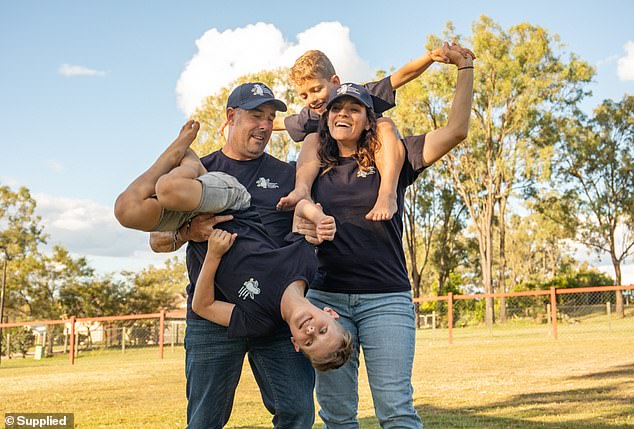
Neurofibromatosis Type 1 (NF1) is the most common type of condition; it affects an estimated one in 3,000 people in Australia
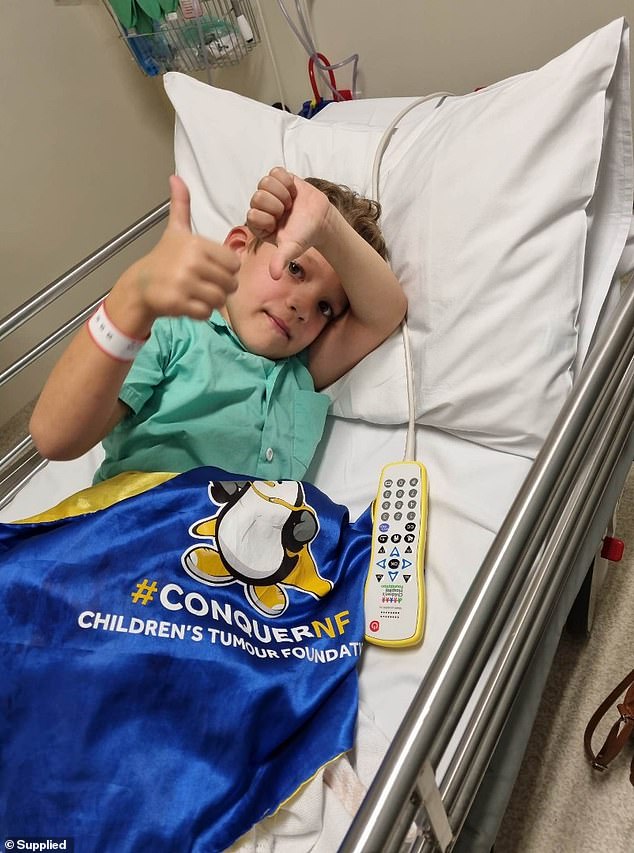
He is now seven and is constantly in and out of hospital. He has numerous tumors on his spine and in his brain, but they have not yet caused any side effects. Although the tumors are benign, they can become cancerous at any time
Grayson, now seven, has numerous tumors on his spine and brain, but fortunately they have not yet caused any side effects.
Although the tumors are benign, they can become cancerous at any time – something Jennifer described as a 'ticking time bomb'.
“His tumors are pressing against his spine and brain – only some can be removed, but we cannot stop them from growing back,” she said. 'The biggest struggle is the fact that he has it for the rest of his life – there is no cure – and it breaks my heart as a parent.
“A few weeks ago he asked my husband Tim a question in the car and said, 'Dad, why can't my tumors go away?'
The largest is on its 13 cm spine. There are also tumors in his brain behind his eyes and a 6.5 cm tumor next to his heart.
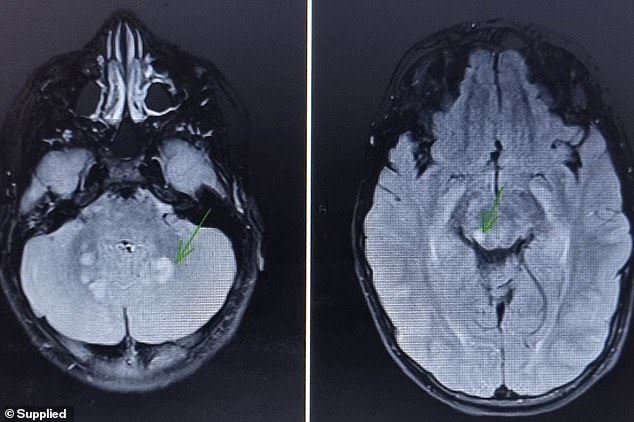
He has a few tumors in his brain and behind his eyes (photo). The largest tumor on his spine is 13 cm in size
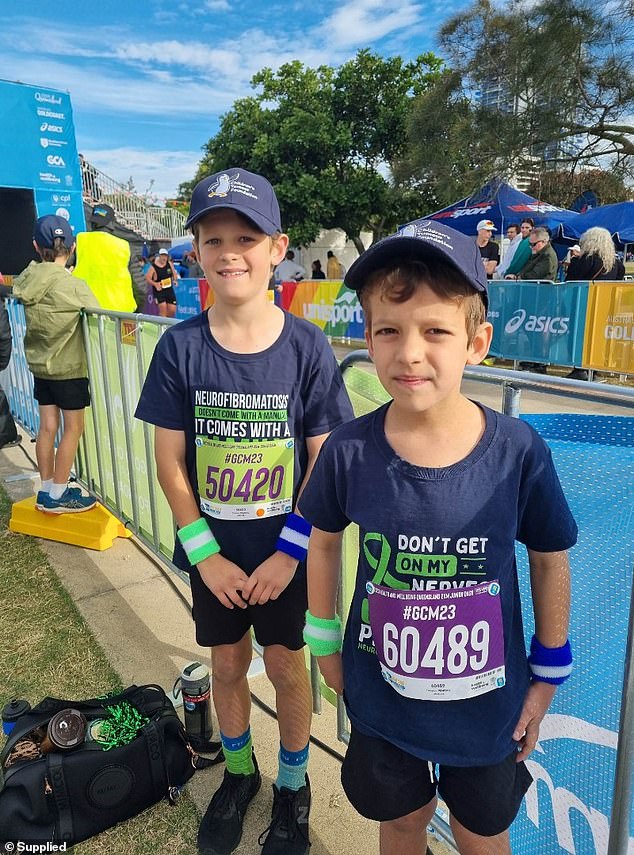
“The biggest struggle is the fact that he has it for the rest of his life – there is no cure – and it breaks my heart as a parent,” Jennifer said. Grayson now has two MRIs a year to monitor any changes in his brain and optic nerve
Grayson now has two MRIs a year to monitor any changes in his brain and optic nerve.
'It's just a monitoring game. Every MRI is a horrible experience: waiting for the results and not knowing what it could be,” Jennifer said.
'My assumption is that it is a ticking time bomb; you don't know when things are going to change or when things are going to get so serious that he's going to have to spend a lot of his days in a hospital.
'There is no prevention for these children or adults diagnosed with NF. It just sits there waiting to take its toll on their bodies. We will try to make it as normal as possible and advocate for some form of NF awareness out there.”
Grayson loves football but cannot play the sport because his parents worry that any rough movement could affect one of his tumors and cause further damage.
“We asked him if he wanted to be a referee because then he can still play the sport, no one can touch him and he can be the boss of everyone,” Jennifer said with a laugh.
'I don't think he'll ever be able to get a massage either. That's a strange thought, because you shouldn't touch tumors.'
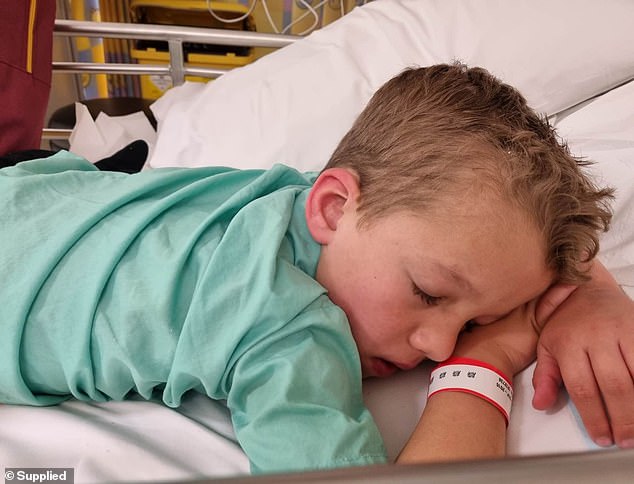
'It's just a monitoring game. Every MRI is a horrible experience: waiting for the results and not knowing what it could be,” Jennifer said
Jennifer and Tim do not have NF, but the condition is passed on through genetics and can occur 'spontaneously'.
If Grayson were to have children later in life, he would have a 50 percent chance of passing this on to his children.
Jennifer said there is one “lifelong” drug that will keep the condition from worsening, but it would cost the family $2,500 a month.
Other common symptoms of NF1 include benign swelling of the nerves known as neurofibromas, freckles in unusual places such as the groin and armpits, and freckles in the iris (lic nodules).
Earlier this month, the family attended the Color Run to raise money and awareness about NF.
READ MORE: A young nurse's warning to Australians why everyone should have a bed frame to avoid dangerous mold
Young woman, 30, diagnosed with terminal cancer after feeling 'bloated and tired' reveals how she will spend her final days
